第119章 STORY TELLING--A PUBLIC LIBRARY METHOD(2)
The Carnegie Library of Pittsburgh began systematic story telling to large groups of children in 1899.After a few months a decided change was noted in the children's reading.The stories were selected from Shakespeare's plays and there came an increasing demand for books containing the plays,or stories from them.It became evident that if a story was carefully prepared with the intention of arousing interest in reading,it could prove a positive factor in directing the reading of large groups of children.The method was adopted throughout the library system and extended to the various children's reading rooms,home libraries,playgrounds and city schools.In order to make the story telling effective and systematic,a subject was chosen for each year,stories being told every Friday afternoon in the lecture rooms of the Central and Branch libraries and at varying intervals in the other agencies.Large numbers of duplicates of children's books containing the stories were purchased and placed on story hour shelves in the children's rooms.Announcements of the story hours were made in the public schools and notices posted on the bulletins in the children's reading rooms.The children responded so eagerly that it became almost impossible to handle the large crowds attending weekly and it was quite impossible to supply the demand for the books which,previous to the story hour,had not been popular.
The story hour courses are planned to extend over eight years and are selected from romantic and imaginative literature.For the first two years nursery tales,legends,fables and standard stories are told.For the following years--Stories from Greek Mythology;Stories from Norse Mythology and the Nibelungenlied;Stories of King Arthur and the Round Table,and legends of Charlemagne;Stories of the Iliad and the Odyssey;Stories from Chaucer and Spenser;Stories from Shakespeare.At the end of the eight years the cycle is repeated.
The story hours are conducted most informally.The stories are told,not in the children's rooms,as this would interfere with the order and discipline of the rooms,but in the study and lecture rooms of the library buildings.As far as possible a group is limited to thirty-six children.When stories are told to children over ten or twelve years of age,the boys and girls are placed in separate groups.This enables the story teller to develop her story to suit the varied tastes of her audience.
The children sit on benches constructed especially for the story hour.The benches are made according to the following measurements:14in.from floor to top of seat;seat 12in.wide;3benches 9ft.long,one bench 7ft.long.Benches made without backs.Four benches are placed in the form of a hollow square,the story teller sitting with the children.In this way the children are not crowded and the story teller can see all their faces.It is more hygienic and satisfactory than allowing the children to crowd closely about the story teller.The story hour benches are so satisfactory that we are introducing them as fast as possible into all of our library buildings.
Each story is carefully prepared beforehand by the story teller.
In the Training School for Children's Librarians conducted by this Library,all the students are obliged to take the regular course in story telling which includes lectures and weekly practice.Informality in story telling is encouraged.Dramatic or elocutionary expression is avoided,the self-conscious,the elaborate and the artificial are eliminated;we try to follow as closely as possible the spontaneous folk spirit.The children sit breathless,lost in visions created by a sympathetic and un-self-conscious story teller.
In closing I should like to dwell for a moment on what have been called the "by-products"of the Library story hour.Besides guiding his reading,a carefully prepared,well told story enriches a child's imagination,stocks his mind with poetic imagery and literary allusions,develops his powers of concentration,helps in the unfolding of his ideas of right and wrong,and develops his sympathetic feelings;all of which "by-products"have a powerful influence on character.Thus the library story hour becomes,if properly utilized,an educational force as well as a literary guide.